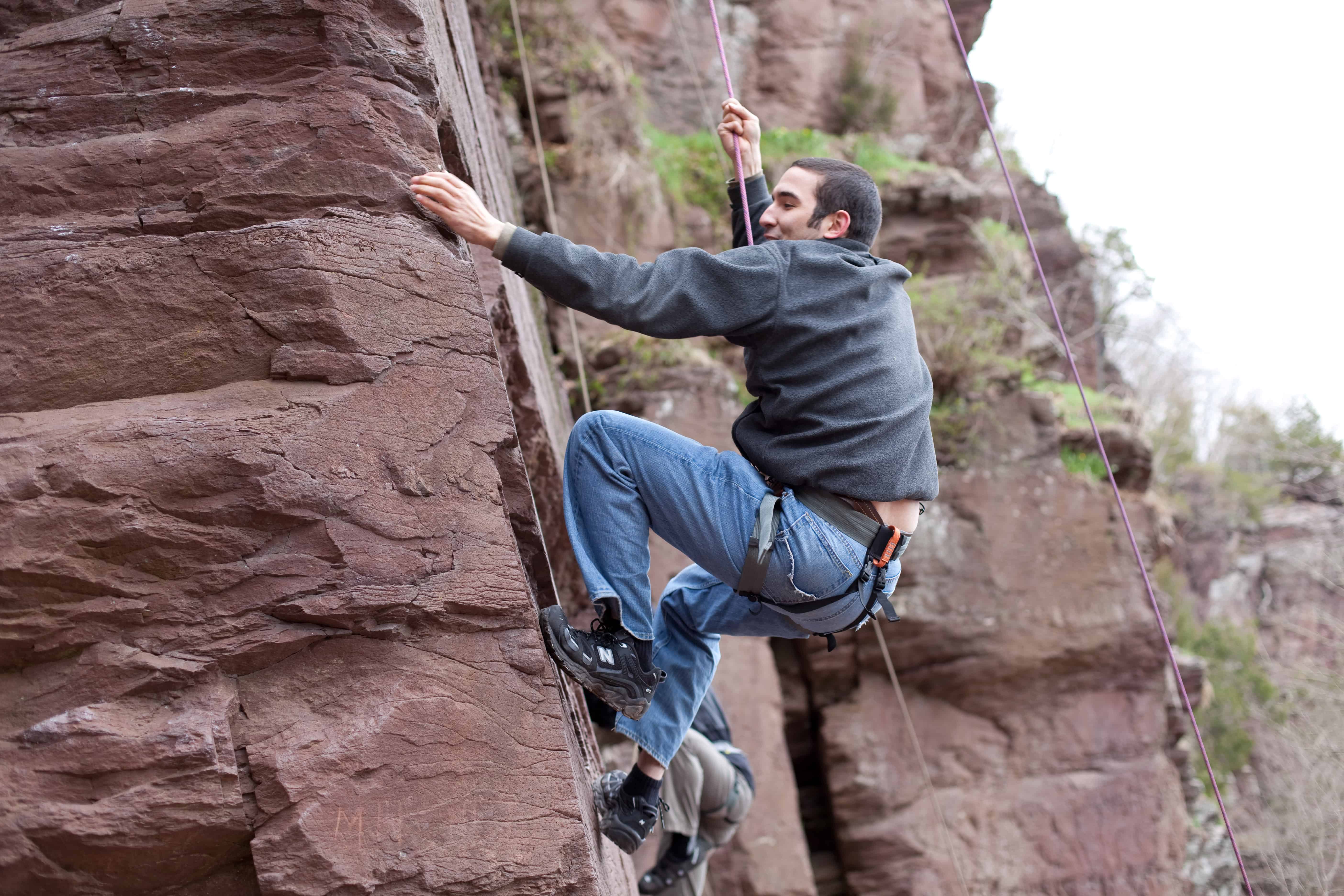He takes a breath, vapour pouring from his mouth like smoke in the winter air. The misty morning casts a haze over the Glenn, a boulder field just two kilometres downstream of Niagara Falls, hiding the icy blue water of the river from view.
Standing on the hundred-step staircase leading down into the southern point of the Niagara Escarpment, his excitement is palpable. A black, tri-folding mattress called a crash pad is strapped to his back as he descends the stairs into the foreboding fog, the taste of high adventure in the air.
Wet limestone glistening in the morning light, he presses on as these boulders will not dry out for days. Searching for something he saw long ago, he turns and discovers what he sought — a sandstone cave juts into the hillside, adjacent to the river, New York no more than a football field away.
The cave demands steep overhanging climbing by its very nature. Preparing for an investigation into the inverted, climber Kai Malcolm straps on his climbing shoes and begins his dance with the rock, a flawless number where a missed step means a less-than-comfortable fall to the earth below.
The climbing shoes are similar to ballet slippers in design, as they are pointed, extremely painful, and fitted to the smallest size possible. This masochism, a theme that permeates throughout the entirety of the sport, makes it a little less difficult to believe that climbers sacrifice all forms of comfort to this activity.
Bleeding fingertips are a constant for outdoor rock climbers, and the persistent defeat of missed moves forcing the athlete to the ground hardens the individual that pursues this rejection of gravity in search of greater heights.
Malcolm describes climbing as the “conquering [of] something you may have previously thought impossible.”
Rock climbers can spend years working over the same route, repeatedly trying to dial in every move perfectly, so that they can finally ascend the rock that rejected all of their earlier attempts.
Indoor rock climbing is an activity that supports its participants with relaxed athletic environments. It is built on the basis of trying hard and not talking about the pain — except to laugh about it. This sort of community can be experienced in gyms across Canada and the US, with 49 new gyms cropping up in 2015 alone.
In Toronto, the closest gym to UTSG opened in 2016. Basecamp is just two kilometres west on Bloor Street from St. George Street. With gyms like Basecamp still opening, it is clear the sport is growing.
New does not always mean better though, as gyms vary in benefits. While Basecamp is a great place to climb as a casual activity, Joe Rockhead’s in Liberty Village is a better place to experience climbing history, since it was Canada’s first climbing gym.
If serious training is what you’re after, Boulderz on Dupont Street provides a unique training area on the second floor, as well as a large cave the size of the building.
Malcolm’s personal favourite, Rock Oasis in the east end, is arguably one of the better gyms to go to if the focus is to get strong fast.
With stiff grades, a training area, and a creative outdoor setting lead by Routesetter Hans Schiemann, it is no surprise that this is the gym that many of the professionals visit when in Toronto. With student memberships starting at $55.00 dollars a month for experienced climbers, Rock Oasis also provides good value for their services.
Outdoor rock climbing options are also available in Ontario. There is sport climbing at Lion’s Head and Rattlesnake Point, and traditional climbing all across the Niagara Escarpment.
When it comes to rock climbing options, a person could only hope to climb them all. The sport is growing rapidly in Canada, which poses the question: when are you going climbing?


